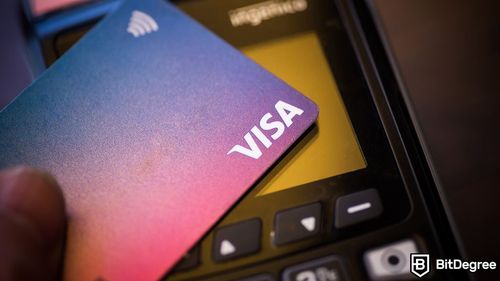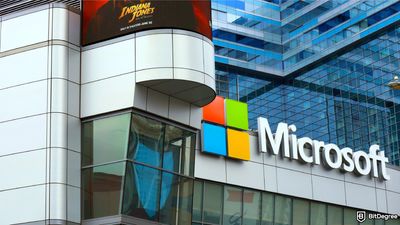Visa aims to change the game on how Ethereum gas fees are paid.
Visa, a leading payment platform, is delving into an advanced solution revolutionizing the way Ethereum gas fees are paid. The new development will allow users to use their Visa cards to cover gas costs.
At the heart of the matter is a fundamental challenge identified by Visa: crypto users have to continuously maintain Ether (ETH) in their wallets to cater to fluctuating gas fees.

Did you know?
Want to get smarter & wealthier with crypto?
Subscribe - We publish new crypto explainer videos every week!
How do Cryptocurrency Exchanges Work? (Easily Explained!)


As Mustafa Bedawala, a product manager at Visa, stated, the conventional Ethereum practice necessitates users to buy ETH through crypto exchanges. They then transfer this acquired ETH to their wallets to handle the ever-changing gas fees. This system has often resulted in users either excessively spending on gas or finding themselves with an inadequate amount of ETH.
To streamline this, Visa has come up with a pioneering solution. Their method leans on Ethereum’s ERC-4337 standard tied with a “Paymaster” smart contract.
This is how it works: a user initiates an Ethereum transaction via their wallet, directing it to the paymaster. This web service calculates the due gas fee, billing Visa through Cybersource. A digital confirmation is momentarily given and affixed by the user’s wallet before it's dispatched to Ethereum. The Paymaster, after receiving it, checks this confirmation and manages the gas fee.
Test runs of this approach have been executed on the Ethereum Goerli testnet. For these trials, Visa used accessible open-source instruments, including Stackup’s userop.js library. The experiments saw successful transactions where fees were addressed through the Paymaster, thus circumventing the need for ETH.
It is worth noting that the broader implications of this service could redefine the blockchain ecosystem. There is a potential for decentralized applications and merchants to leverage the Paymaster system, offering more streamlined user experiences by permitting gas fee payments via Visa cards.
Visa’s latest venture is a testament to the rapid evolution and intersection of traditional payment systems and the burgeoning crypto world. This innovation, if fully realized, promises to not only enhance user experience but also bridge a crucial gap in the cryptocurrency transaction space.
In other news, Visa recently unveiled a new initiative aimed at encouraging the adoption of public blockchain networks and stablecoin payments.






















